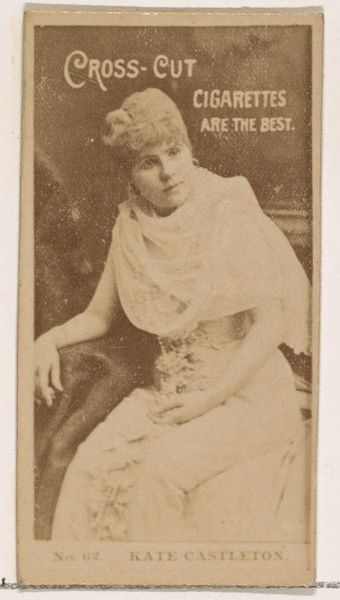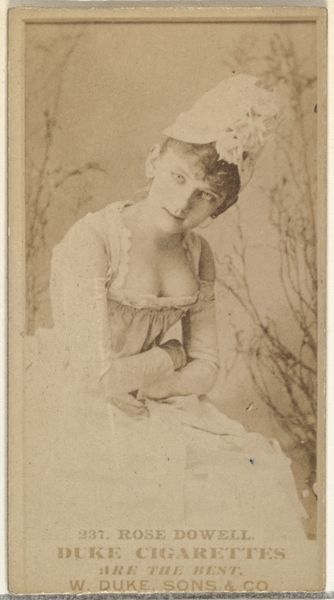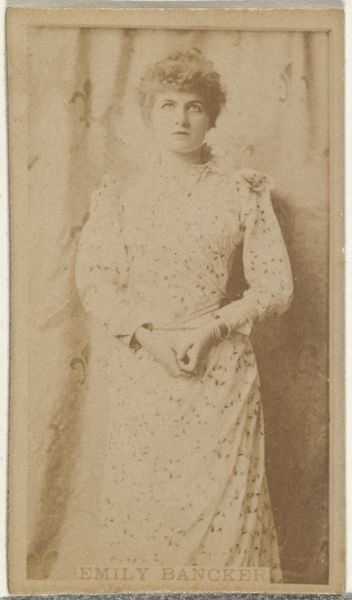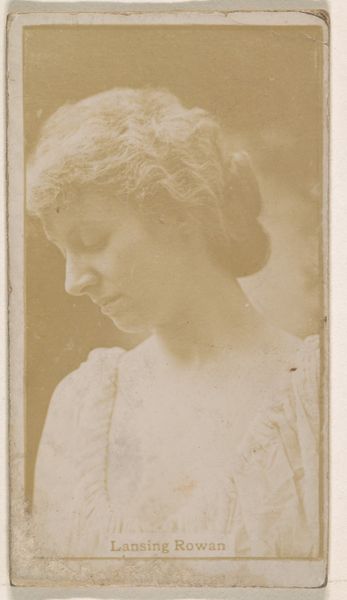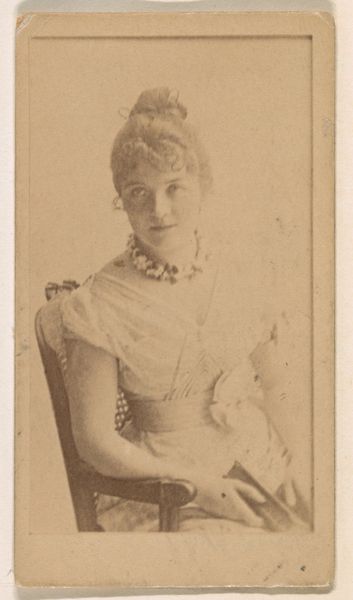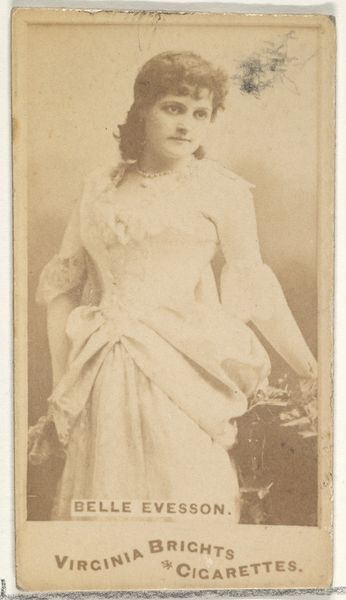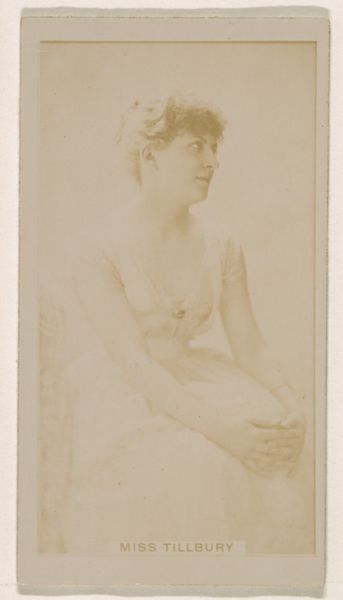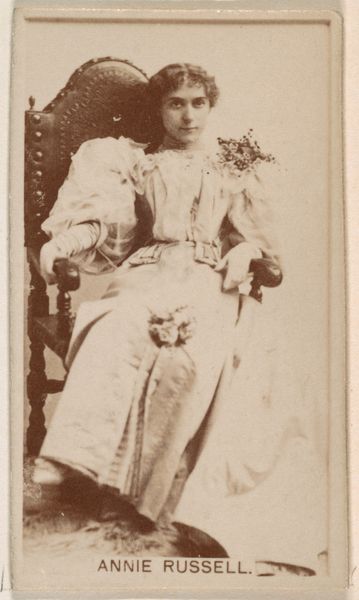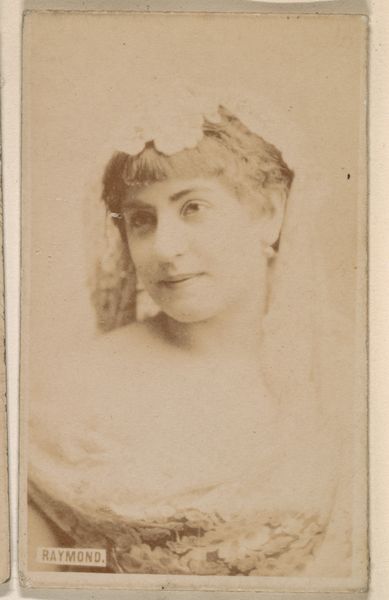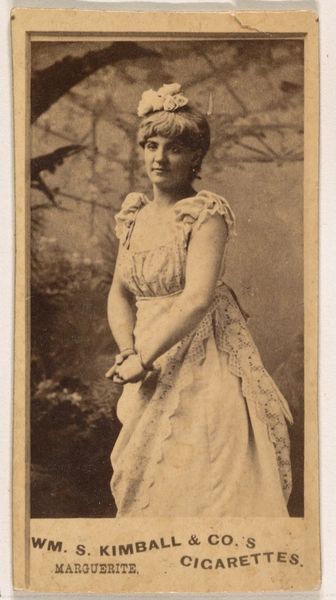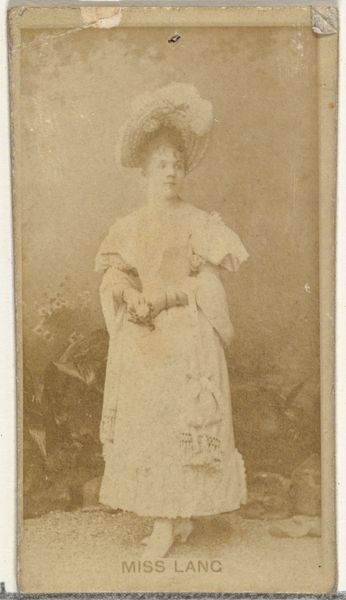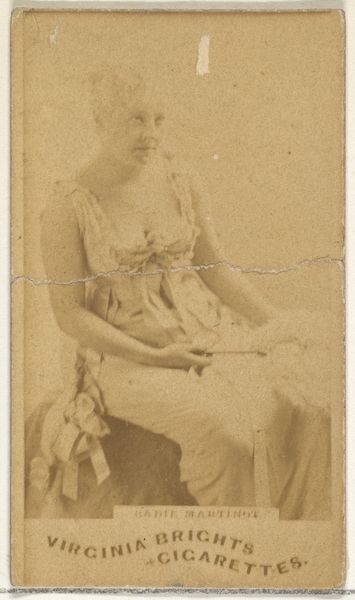
Dimensions: height 340 mm, width 243 mm, height 504 mm, width 360 mm
Copyright: Rijks Museum: Open Domain
Curator: Here we have Julia Margaret Cameron’s “Portret van een onbekende vrouw," which translates to "Portrait of an Unknown Woman," likely taken around 1874. It's a gelatin-silver print, typical of her work. Editor: It’s remarkably soft, almost dreamlike. The edges blur, focusing attention on her face, her expression. You can see the material of her lace shawl rendered in painstaking detail. Curator: Cameron was known for her unconventional techniques. Her "failures" of focus were considered artistic choices—a departure from the clinical precision favored by her contemporaries. She actively challenged the established norms of Victorian portraiture. Editor: It is this soft focus which makes the subject look as if she is glowing. The process itself, the manipulation of the gelatin and silver, feels like an attempt to capture something ethereal rather than simply record a likeness. I wonder about the role the sitter played; how much control did Cameron afford her in shaping this image? Curator: Indeed. The lack of strict sharpness was initially criticized, but figures such as the Pre-Raphaelites valued it precisely because it enhanced the image’s emotional impact and connected her portraits to traditions of painting. This approach aligns her with the artistic trends of the time, a time when the status of photography as “high art” was being intensely debated. Editor: Exactly! The labor and the specific alchemy of her process elevate it. There's a clear awareness of the materials she employed—the silver, the gelatin, the light—and how these elements are used to conjure not just an image, but a feeling. It feels intimate because you feel the touch of the maker. Curator: What's compelling is how she navigates the public expectation of portraiture and adds to it. This photograph moves beyond a representation of a woman and creates an evocative image—a deliberate play on Romantic aesthetics. Editor: A beautiful collision of process, emotion, and historical moment. Seeing it with your knowledge provides more insight into the image. Curator: And seeing it from your material perspective highlights aspects often overlooked, reminding us that technique and materials have always informed how we perceive art and portraiture.
Comments
No comments
Be the first to comment and join the conversation on the ultimate creative platform.
